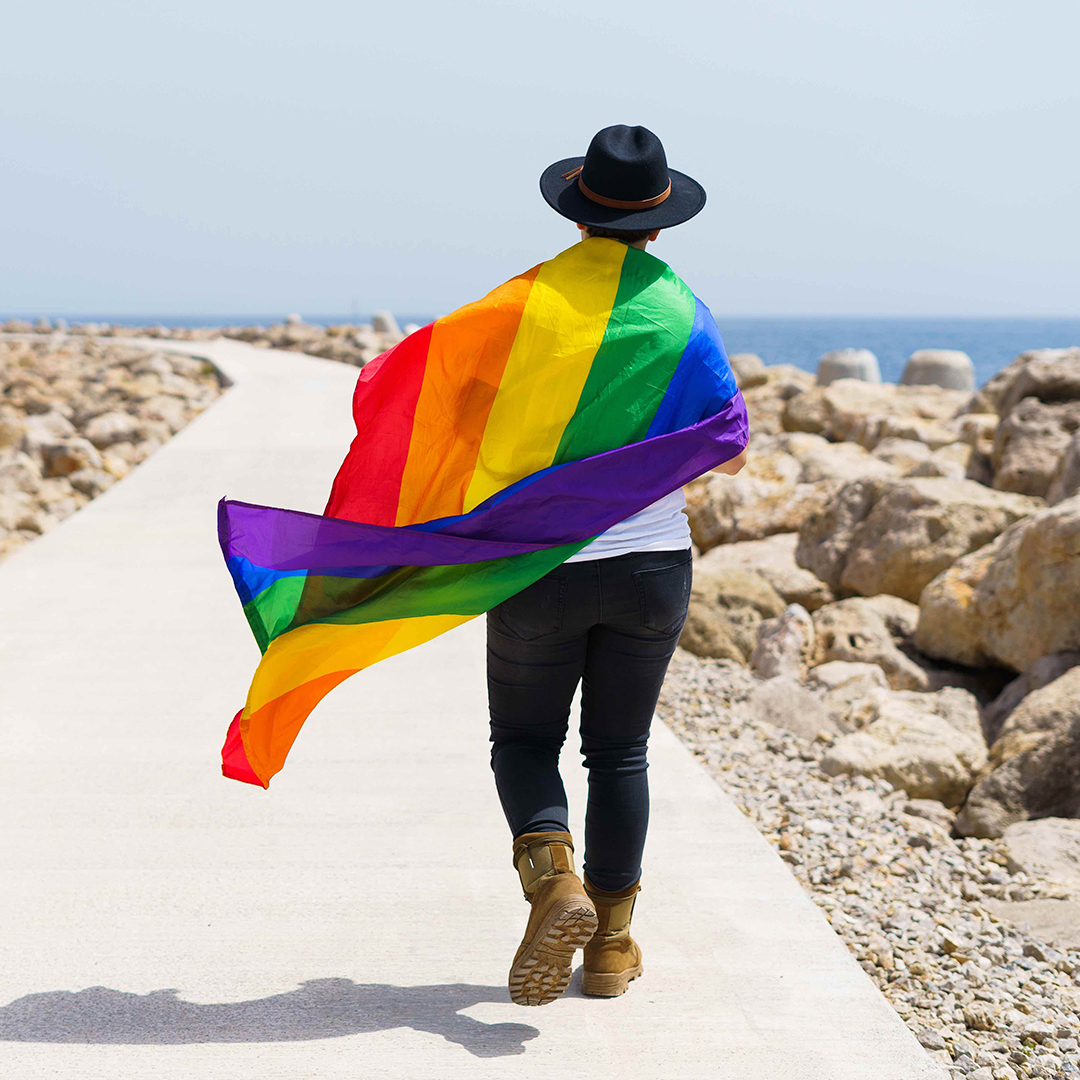Evolution of Transsexuality-Related Diagnoses
DISCLAIMER: This article contains obsolete language that stems from the pathologization of realities that in no case are considered disorders by any reputable Psychology or Psychiatry institution, both at a national and international level. The language used in this article reflects the evolution of academic and health institutions throughout history and it is included here to reflect how the approach of institutions to social demands influences the categorization of the realities studied.
This article is a continuation of the one I recently published on the historical evolution of the diagnoses that the American Psychiatric Association attributed over the years to people with a non-normative sexual orientation. That is, with a sexual orientation other than heterosexuality.
The previous article would not make much sense if I did not also publish this one right after it, as the goal behind writing both of them is to observe how the evolution of the different diagnoses that have been assigned to people with non-normative sexual orientations is surprisingly similar to that of diagnoses assigned to trans people.
Evolution of Transsexuality-Related Diagnoses in the DSM Manuals of the American Psychiatric Association
As in the previous article, I will now review the different diagnoses that the American Psychiatric Association has assigned to trans persons throughout the different editions of the DSM.
DSM-I (1952)
The first edition of the DSM does not explicitly mention transsexuality.
DSM-II (1968)
DSM-II proposes a category for Sexual Disorders, although it is limited and mostly focused on homosexuality and other “disorders of sexual deviance”. Transsexuality is not separated from other realities, but different forms of gender role nonconformity were broadly encompassed as Sexual Deviance.
DSM-III (1980)
DSM-III represented a significant change by introducing for the first time the term “Gender Identity Disorder” (GID), defined as a persistent incongruence between biological sex and the person’s experienced or expressed gender identity. This was an early attempt to formally recognize transsexuality within a clinical framework.
The diagnosis of GID was classified under a new chapter called “Psychosexual Disorders,” which also included other disorders related to sexuality. However, this classification was criticized for pathologizing gender identity not congruent with the sex assigned at birth.
DSM-III-R (1987)
In the revised version of DSM-III (DSM-III-R), the diagnosis of Gender Identity Disorder was maintained, but some modifications were made to the diagnostic criteria. Transsexuality was still seen as a mental disorder.
DSM-IV (1994)
In DSM-IV, Gender Identity Disorder is retained, but distinctions are added for evaluations in children, adolescents and adults. This category caused controversy because of the implication that gender variants in childhood were seen as pathological.
DSM-IV-TR (2000)
The DSM-IV was revised in 2000. The diagnosis of “Gender Identity Disorder” was maintained with some modifications, maintaining the categories and criteria established in the previous version. The manual was still under criticism from the trans community and activists for continuing to include trans realities within pathologizing labels.
DSM-5 (2013)
The publication of DSM-5 marked a major shift in how the American Psychiatric Association addresses transgenderism. The term “Gender Identity Disorder” was replaced with “Gender Dysphoria.” This change is exposed as an effort to reduce the stigma associated with the diagnosis by emphasizing that it is not the gender identity itself that is problematic, but the significant distress that a trans person may experience in the current context.
In addition, the DSM-5 introduced more detailed diagnostic criteria, differentiating gender dysphoria in children from that experienced in adolescents and adults. It was also explicitly recognized that not all people with gender incongruence experience significant dysphoria, in order to clarify that transsexuality is no longer inherently viewed as a mental disorder.
DSM-V-TR (2022)
The DSM-5-TR (Diagnostic and Statistical Manual of Mental Disorders, Revised Text) represents a revision of the DSM-V, adding minor changes to the 2013 edition, including some key changes regarding gender dysphoria to reflect greater accuracy and awareness of the social reality being discussed:
- The term “desired gender” has been replaced with “experienced gender,” underscoring that gender identity is an internal experience and not just a desire for change.
- The phrase “medical cross-sex procedure” has been updated to “gender affirming medical procedure,” reflecting a more respectful and affirming approach toward medical interventions related to gender identity.
- Language regarding sex assigned at birth has been modified. The terms “natal male” and “natal female” are now described as “person assigned male at birth” or “person assigned female at birth,” reinforcing the distinction between assigned sex and experienced gender.
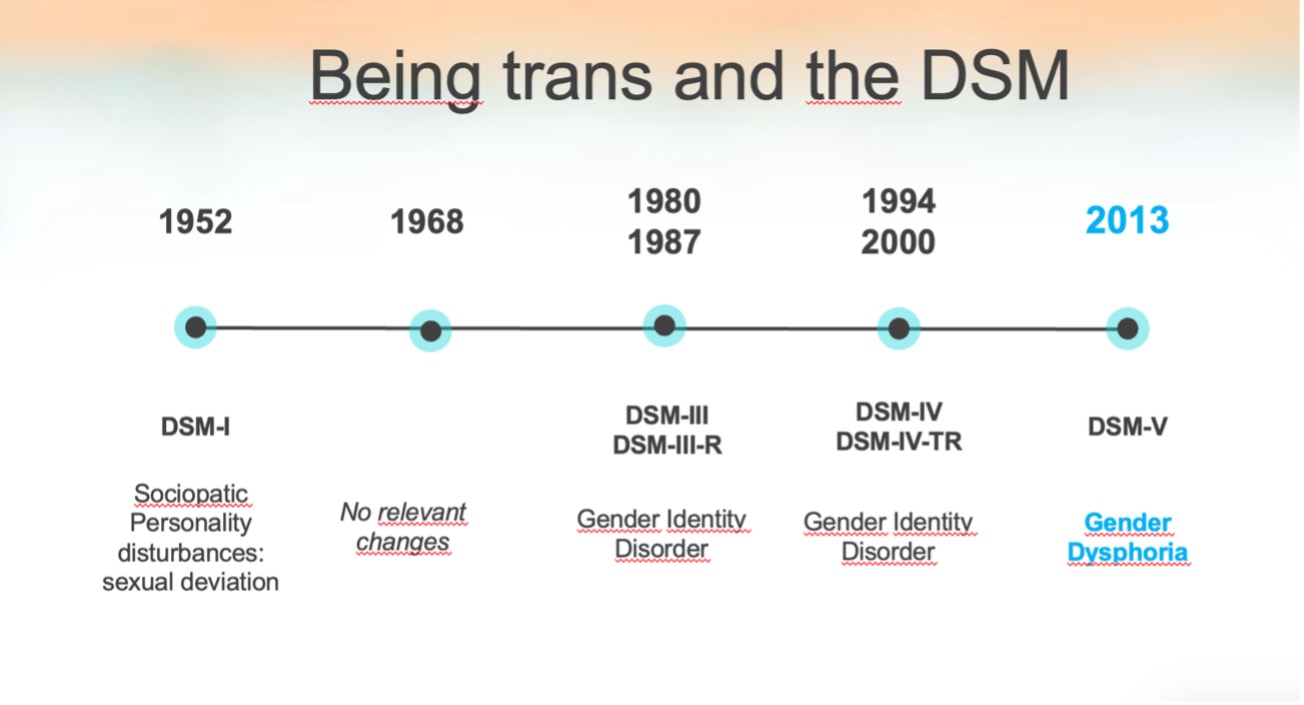
Future Perspectives
The evolution of transgender-related diagnoses in the DSM manuals reflects an ongoing process of revision and updating as understanding of gender diversity advances. It is expected that future revisions will continue to depathologize trans identities and focus more on providing a supportive framework for those experiencing gender dysphoria, rather than classifying them within a pathological context.
The current category of “Gender Dysphoria” is not without controversy as it receives similar criticism as the category of “Egodystonic Homosexuality” did at the time. There are also arguments, of a more practical nature, in favor of it because of the requirement of insurers and health services for the presence of a diagnosis that justifies gender reassertion interventions in trans persons. However, some argue that there are already natural conditions, such as pregnancy, that require medical interventions without the need for a pathologizing diagnosis, so the same logic could be applied to interventions aimed at improving the quality of life of trans people.
About the author
Jorge Jiménez Castillo is a psychologist at SINEWS, where he practices in English and Spanish. He works daily with local and international populations and has a long history of studying the reality of the LGTBIQ+ community in and out of the clinic. He works from a cognitive-behavioral approach with evidence-based interventions and believes that in order to provide quality psychological care one must be aware of the inequalities that intersect with users and explore how they intersect with each other.
Division of Psychology, Psychotherapy and Coaching
Psychologist
Adults and adolescents
Languages: English and Spanish
Evolution of Homosexuality Diagnoses
DISCLAIMER: This article contains obsolete language that stems from the pathologization of realities that in no case are considered disorders by any reputable Psychology or Psychiatry institution, both at a national and international level. The language used in this article reflects the evolution of academic and health institutions throughout history and it is included here to reflect how the approach of institutions to social demands influences the categorization of the realities studied.
As is often the case with ideas that seem to be my own, it is not clear to me whether the thoughts underlying this article – and the next one that I will publish as a continuation of it – are homegrown or the result of having read about them somewhere. Probably the latter, hence why I am very grateful to all those who write about human rights and the importance of ethical practices within institutions. It has long been clear to me that being original is wildly overrated. If someone has good ideas, it is better to listen to them, internalize them and elaborate on them so that you can expand them in a way that makes sense within your own worldview and, in my case, the scientific evidence available to me. I apologize for not citing authors in these articles, but it is difficult for me to point to anyone specific. However, I would like to briefly mention Devon Price, a social psychologist who does an incredible job at educating and advocating for human rights. It may seem unexpected that I, as a Psychologist doing therapy at a clinic, would mention a Social Psychologist as an author I resort to for relevant topics about my work. However, because of my eagerness to do evidence-based work, Behavior Analysis is central in my practice because this approach, even if heavily misunderstood, is focused on the interaction between a person and their environment. Therefore, Social Psychology is perfect if I want to broaden my understanding of how our context shapes our reality.
Since it dawned on me, I periodically catch myself thinking about how the evolution of the diagnostic labels attributed to the realities of trans people is strikingly similar to that of the labels attributed to people with non-normative sexual orientations. The depathologization of non-heterosexual people is widely accepted by all institutions of psychology and medicine, but although the depathologization of trans people follows the same path, we have not yet reached the completion of that process in part due to, I believe, the fact that society has not yet finished understanding and accepting the existence of people who identify with a gender other than the one assigned at birth based on their genitalia.
The diagnoses included in the DSM (Diagnostic and Statistical Manual of Mental Disorders, published by the American Psychiatric Association) and other classifications are a product of their time, as they reflect the interests of society and the paradigms most accepted by psychiatrists at the time of their publication. Thus, I have decided to show the evolution of both diagnoses assigned to homosexuality (and other non-heterosexual sexual orientations) and those assigned to trans people.
Evolution of Diagnoses Associated with Homosexuality
Different editions of the Diagnostic and Statistical Manual of Mental Disorders (DSM) have classified homosexuality differently, reflecting changes in the social perception of homosexuality over time.
DSM-I (1952)
“Sociopathic Personality Disorder – Sexual Deviations”: In the first edition of the DSM, written in 1952, homosexual people are diagnosed with a “Sociopathic Personality Disorder”, within the subcategory of “Sexual Deviations”, reflecting a clear negative bias towards this population.
DSM-II (1968)
Homosexuality is still included under “Sexual Deviations”. However, this time there are a bunch of other subcategories classified as sexual deviations along with it. Thus, homosexuality appears in this edition along with other categories such as fetishism, tavestism, pedophilia and sadism, among others.
Strong criticism from society: During the 1960s and early 1970s, and due to a growing civil rights movement and pressure from LGBT activists, ordinary people and professionals begin to talk about the need for the elimination of homosexuality as a psychiatric diagnosis.
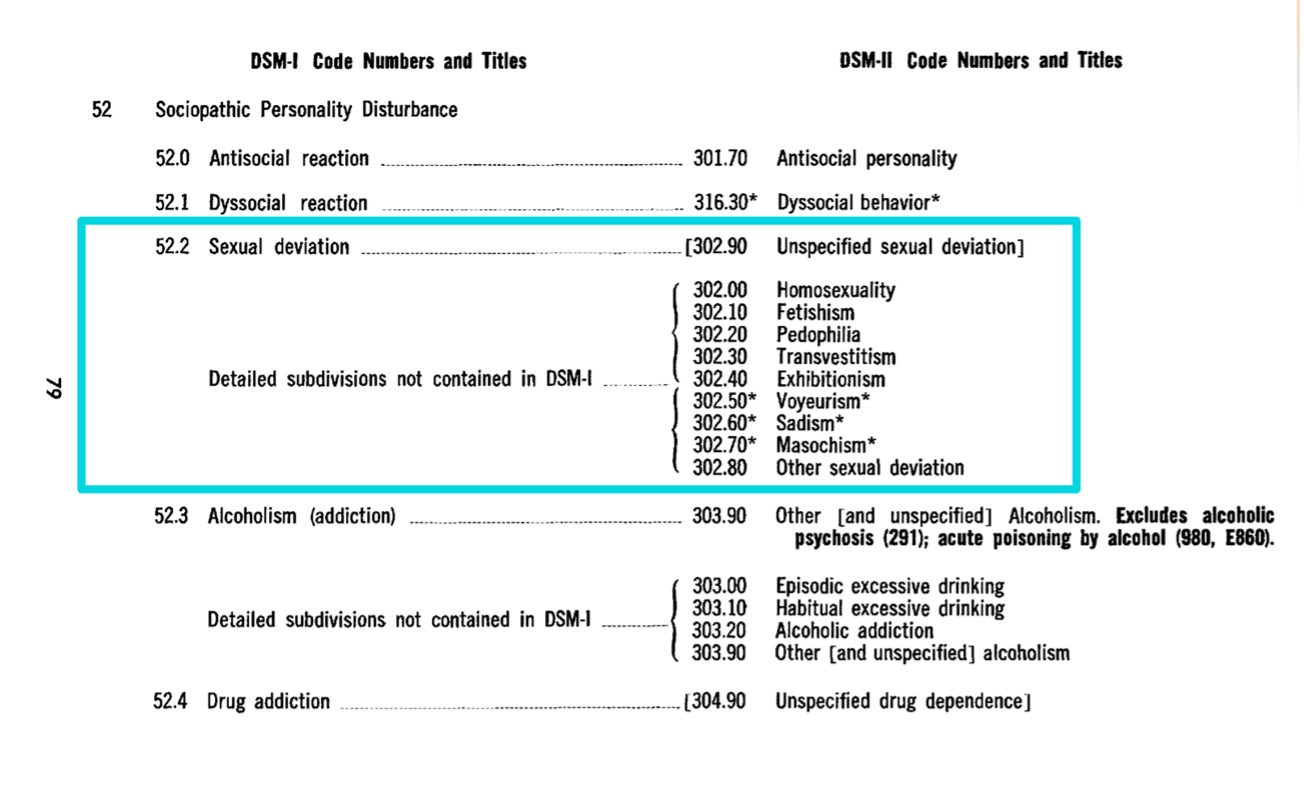
Removal of Homosexuality from DSM-II (1973):
In 1973, the Board of Directors of the American Psychiatric Association (APA) makes the decision to remove homosexuality as a mental disorder after voting on it. In its place a new category is created: “Disorders of Sexual Orientation,”. This new label does not present homosexuality as a disorder in itself, but serves as a diagnosis for homosexual people who feel conflicted about their sexual orientation.
DSM-III (1980)
In the third edition of the DSM, the former category “Disturbance of Sexual Orientation” is replaced by the new label “Egodystonic Homosexuality,” assigned to those whose sexual orientation caused them distress and who had a desire to change it.
DSM-III-R (1987)
During the DSM-III revision, Egodystonic Homosexuality was eliminated as a diagnosis. However, it is still possible to assign a diagnosis to people who experience persistent discomfort caused by their sexual orientation. For this purpose, this reality is included within “Sexual Disorders Not Otherwise Specified”, a broader category.
DSM-IV (1994)
As of the fourth edition of the manual, any allusion to homosexuality as a mental disorder is completely eliminated because sexual diversity is seen as part of normal human variation. Suffering related to one’s sexual condition no longer has a specific category, as it is understood that a specific label for people with non-normative sexual orientations can be stigmatizing and that a person can suffer for many different reasons, so it is not necessary to create so many subcategories.
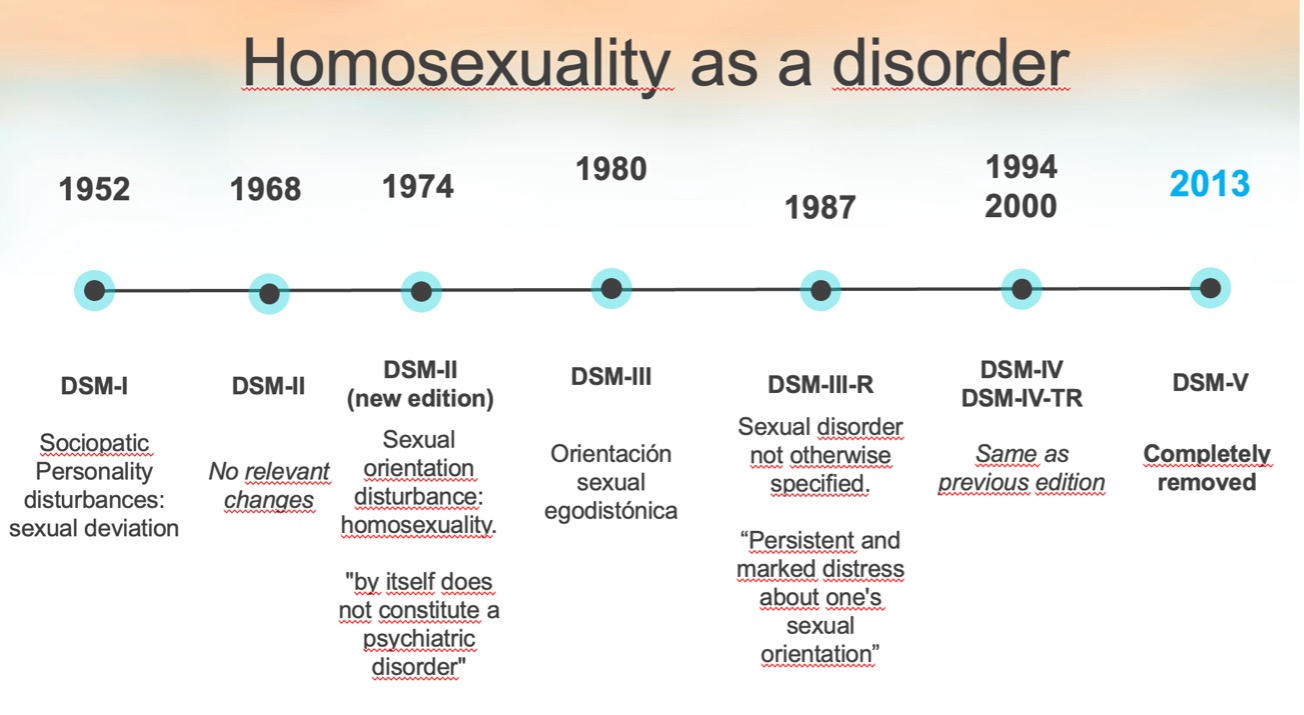
Implications and conclussions
Although the chronology presented above summarizes the technical changes seen in the different editions of the manual published by the American Psychiatric Association, it must be said that these changes were clearly influenced by the harsh criticisms that the above-mentioned diagnoses received. The professionals who created these diagnostic categories were questioned, among other things, due to the poor scientific evidence provided by the theories on which they justified them.
I consider it is very important to recognize the work of those who, both inside and outside Psychology and Psychiatry institutions, helped facilitate these changes.
Thank you to those who maintain a critical attitude towards institutions and those who understand that science and its practical applications are influenced by the social realities of their time.
About the author
Jorge Jiménez Castillo is a psychologist at SINEWS, where he practices in English and Spanish. He works daily with local and international populations and has a long history of studying the reality of the LGTBIQ+ community in and out of the clinic. He works from a cognitive-behavioral approach with evidence-based interventions and believes that in order to provide quality psychological care one must be aware of the inequalities that intersect with users and explore how they intersect with each other.
Division of Psychology, Psychotherapy and Coaching
Psychologist
Adults and adolescents
Languages: English and Spanish
The role of community on our psychological health
When a person is suffering and is encouraged to talk to a psychologist, it is common to think that they are the only one who will need to change their behavior and way of relating to their environment. It is logical to have this approach, as it is the result of what we call «cognitive biases», processes by which people seek to simplify the vast amount of information they work with in order to sort it out and find patterns within it. In doing so, we create «shortcuts» that, despite being a bit inaccurate, help explain our reality and make decisions more efficiently. Thus, when we observe a person who is having a hard time, it is easy to observe behaviors that catch our attention and interpret that these behaviors are the source of the problem and not the result of complex chains of events. However, in this article we will delve into the reasons why this approach tends to fall short.
To get started, let’s look at the official WHO definition of health: «Health is a state of complete physical, mental and social well-being and not merely the absence of disease or infirmity.». This definition highlights the importance of context and, therefore, when an individual has certain behaviors, vulnerabilities or difficulties, we need to understand that they are always linked to the social reality of their environment.
Going to therapy
In therapy, the work usually is carried out by one person and their psychologist. Due to the biases mentioned above, it is easy to act as if the individual were the only source of problems and solutions. However, a good part of the efforts in therapy are directed towards working on the way the individual interprets reality and relates to their environment, empowering them, when necessary, to learn to navigate social situations. We cannot forget that assertiveness is, when it comes to setting and respecting limits, a fundamental pillar in the therapeutic process of many people.
Oftentimes, it is also crucial to do an important job of educating and raising awareness in the person’s environment. This makes sense if we take into account that it is common for the people around them to play an active role in maintaining the situations that are perpetuating the problem. As a consequence, the therapeutic process can become a challenge for both the individual and their environment, as everything is interconnected and it is not always easy to find culprits and quick solutions.
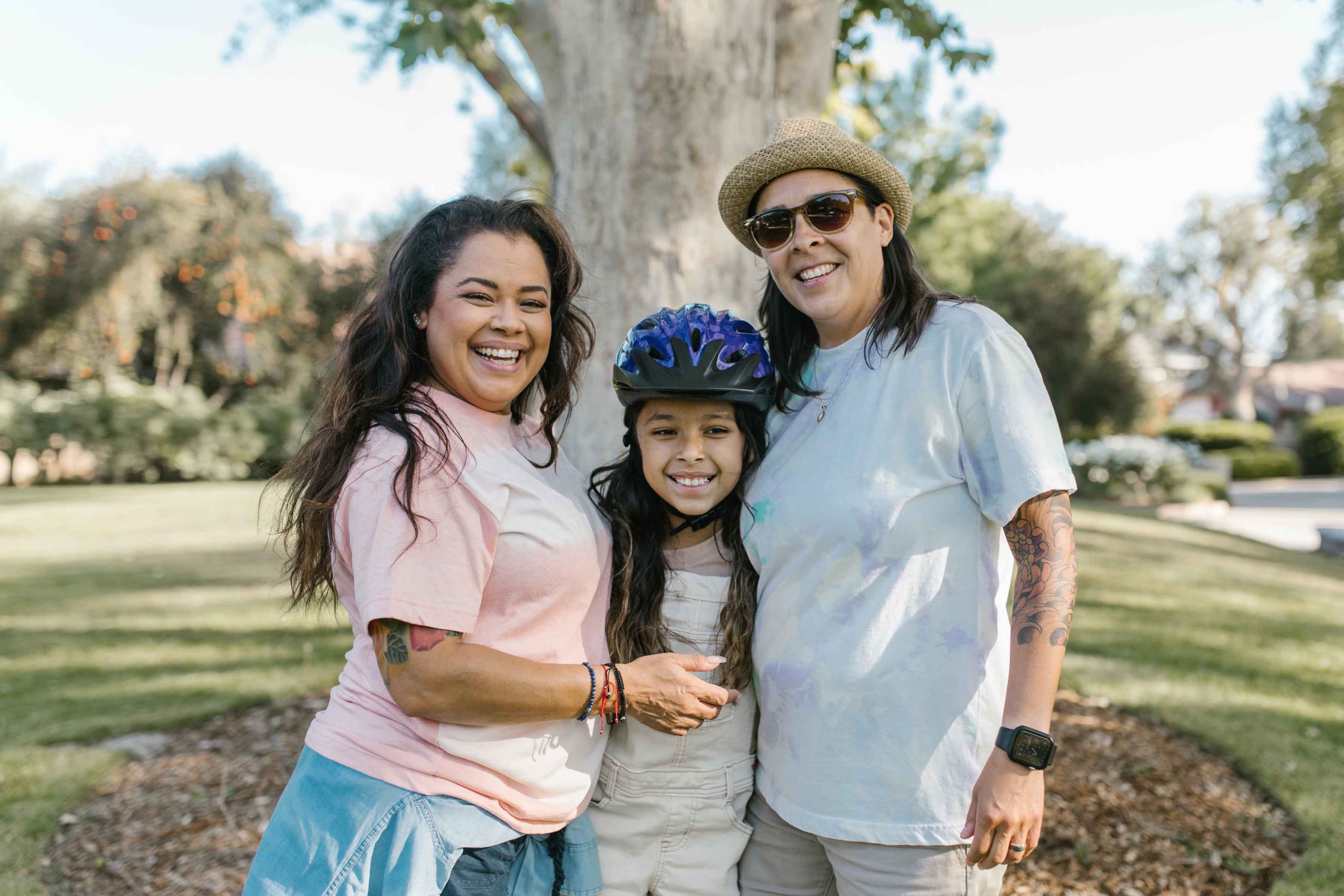
Family dynamics
In the family environment we can find big intergenerational differences that are the result of cultural changes throughout the years and of different members being exposed to different environments. Despite the best intentions of the parents, family plans and goals are often not aligned with the needs and challenges that the children are truly facing at that moment. Unknowingly to the parents, this can lead their kids to overexertion, perfectionism and low self-esteem.
On the contrary, it is also common for one of the parents to receive a disproportionate burden of care. This can happen with responsibilities such as housework, financial support of the family unit or emotional support for the children. This reality should also be considered as, when this happens, finding the optimal way to juggle responsibilities can only do so much and we might need to address the fact that too big of a burden might not be manageable. When this happens, our support network needs to get involved in the solution.
Foreign population
Many people sho come to my office have relocated from other countries, sometimes on several occasions. Most people them tell me that they are happy with the decision, as they come to Spain for work or academic reasons. However, regardless of their reasons, it is inevitable that a move of this magnitude also comes with a loss of social support. This is a logical consequence of leaving behind most of the people in their support network. If, in addition, their country of origin has a significant time difference with the current one, not only do they lose the possibility of seeing their closest people in person, but even telematic communication becomes more difficult than ever due to schedule conflicts. There might be times when, even if they manage to find time to talk, the time difference means that one person is ready to, for example, relax on the sofa while the other one still has to remember picking up the kids from school.
Moving to a new country inevitably comes with new customs and social norms that it is essential to learn and internalize as you go along. This process is very enriching and broadens your horizons. However, even if the balance is positive, it can be an important source of instability.

Minority Stress
The importance of community support can also be observed in the case of minorities who experience problems that are exclusive to their group. This often has critical consequences that can deteriorate the psychological health of individuals, as Meyer explains with his theory of «minority stress». This approach is applicable to groups such as LGTBIQ+ people, ethnic minorities or people with conditions that are far removed from neurotypicality, such as autism and attention deficit disorder. For these people, it is not always easy to find an environment in which they can meet their needs and feel welcome, which is why much of the work done in therapy focuses on getting the person to create bonds with people similar to themselves and educating their environment about how their minority status affects their well-being.
Activities and physical environment
Our communities, the places we inhabit, and our internal well-being are closely intertwined. It is common for therapists to encourage people to cultivate hobbies, but the importance of hobbies goes beyond the need to engage in enjoyable and fulfilling activities. Hobbies are also a healthy way of creating relationships with other like-minded people.
People need to frequent spaces where they can relate to each other in a healthy way. Because of this, we need to highlight the importance of environments in which the consumption of alcohol or other substances is not central to the interaction so that people who struggle with substance abuse can be safe in them. This is a frequent complaint of people who do not feel comfortable socializing in queer bars because, even if they enjoy the company of their friends and acquaintances, the high availability of alcohol in these environments can be detrimental to their wellbeing.
In the same way, we need spaces with accommodations that allow for the presence of people with disabilities. These accommodations, such as preventing noise levels from getting too high or the presence of elevators, end up benefiting everyone and are a good reminder of how the inclusion of a minority benefits the entire group.
Finally, I would like to highlight the growing importance of virtual spaces, as they can function as meeting points for individuals with shared characteristics and there are populations, such as autistic people, who especially benefit from the existence of virtual environments in which they can interact with less difficulties.
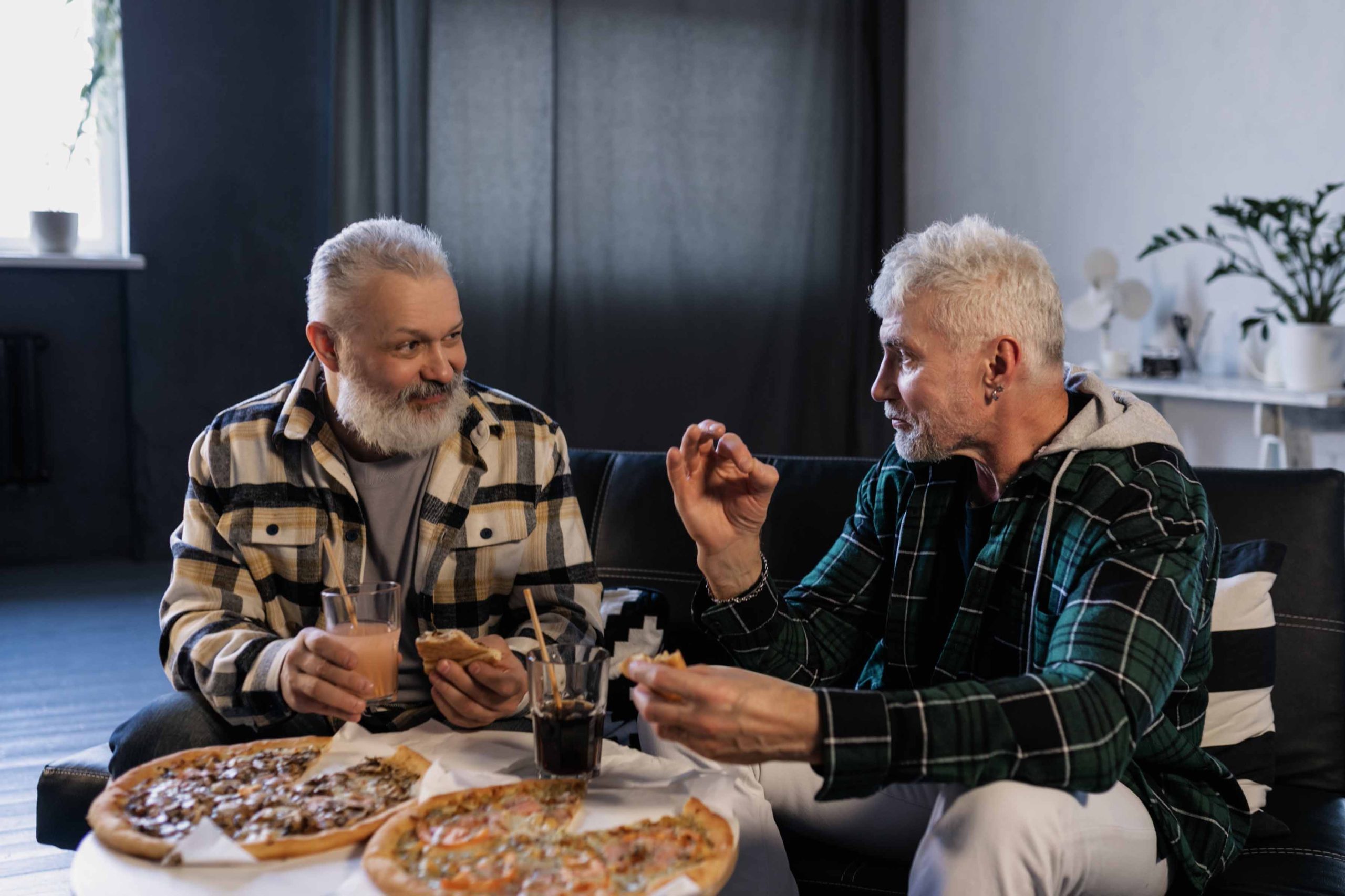
Co-regulation
Emotional self-regulation is much talked about as a fundamental pillar of psychological well-being, and rightfully so. Nonetheless, another type of regulation that is less talked about is co-regulation. Humans have an incredible ability to detect emotional reactions in others and, with good communication, we are able to understand each other’s emotional needs very well. Therefore, we can modulate both our emotions and those of the people around us.
This incredible resource tends to be underestimated, but it is very valuable as long as it takes place between people who treat each other as equals and have good communication about their needs and limits.
So, am I not responsible for my own well-being?
Yes. And no. But yes. It depends. You are responsible for making a realistic assessment of your situation and committing to changing what you can, but it is also essential to understand that we are social beings who depend on each other and, therefore, your well-being and the well-being of those around you have always been and always will be intimately interrelated.
About the author
Jorge Jiménez Castillo is a psychologist at SINEWS, where he practices in English and Spanish. He works daily with local and international populations and has a long history of studying the reality of the LGTBIQ+ community in and out of the clinic. He works from a cognitive-behavioral approach with evidence-based interventions and believes that in order to provide quality psychological care one must be aware of the inequalities that intersect with users and explore how they intersect with each other.
Division of Psychology, Psychotherapy and Coaching
Psychologist
Adults and adolescents
Languages: English and Spanish
What is Minority Stress and how does it affect LGBTQ+ people?"
To combat inequalities, it is essential to build scientific approaches with minorities in mind. Thus, beyond the existence of laws that look after the interests of disadvantaged communities, researchers and health professionals must be aware of the impact their work has on such communities and use that knowledge to promote equality. While there are different views on how to support unequal groups – for example, London (2008) argues for the importance of giving a voice to those we want to help in order to avoid paternalism – I believe that, whatever perspective we adopt, it is essential to know the reality of the groups whose rights we want to preserve. Therefore, I will elaborate here on the conditions of sexual minorities and how they affect their psychological wellbeing.
Discrimination, stress and psychological health
Sadly, the unfavorable social environment that sexual minorities experience in around the world can be an important source of stress. In Spain, the latest report carried out by the Ministerio de interior (Department of Internal Affairs) on hate crimes reflects that 530 hate crimes motivated by homophobia and transphobia were registered in 2021. Assault and hate speech incidents motivated by the victim’s sexual orientation or gender identity have been on the rise in recent years and make up 25.86% of all hate crimes recorded in Spain in 2021.

Moreover, although an adverse social environment leads to increased stress for everyone (Dohrenwend, 2000), there are key components that differenciate the stress that minorities suffer due to the discrimination they face. Thus, and with the aim of diferenciate the kind of stress that only minorities face (whether racial, sexual or otherwise) and based on several works in social psychology and sociology, Psychiatrist Ilan Meyer (1995, 2003) developed the Minority Stress Model, which explains that minorities are exposed to certain aditional stressors (minority stressors) that the rest of the population does not face.
For Meyer (2003), minority stress is characterized by the following characteristics:
- Unique: it is different from other stressors to which non-stigmatized people are exposed.
- Social: it originates in social structures, processes and institutions over which the affected individual has no control.
- Chronic: it is linked to relatively stable social structures over time.
The minority stressors that Meyer (1995, 2003) considers specific to sexual minorities are: internalized homophobia, experiences of discrimination or violence, perceived stigma and concealment of sexual orientation.
Perceived stigma consists of expectations of rejection and discrimination, which facilitate the emergence of feelings of alienation and fear, as well as heightened vigilance of both the environment and one’s own behavior, which requires a great deal of energy (Allport, 1954; Cohen et al., 1986). Thus, sexual minorities face both acute stressors (experiences of violence) and other stressors of a more subtle nature (perceived stigma).
There is a robust causal association between the presence of stress and the occurrence of Major Depression episodes, supported by a large body of research on the effect on health of both stressful life events (Hammen, 2005) and stressors (Mazure, 1998); Mazure, 1998) as well as continuous and repetitive stressors, which can have a cumulative effect (Juster, McEwen & Lupien, 2010) that can become as harmful as the stress peaks produced by particularly stressful life events (Rojo-Moreno, Livianos-Aldana, Cervera-Martinez, Dominguez-Carabantes & Reig-Cebrian, 2002).

To explain the long-term consequences of discrimination, Pearlin and colleagues (1997, 2005) coined the concept of «stress proliferation», which refers to a causal chain of stressors. This model assumes that after the direct effects of a stressor may have disappeared, the mere exposure to that stressor may have favored the appearance of new ones that do not go away at the same time as the initial stressor. Along the same lines, Hatzenbuehler (2009) states that the higher levels of stress to which sexual minorities are exposed favor the appearance of interpersonal problems, emotional dysregulation and dysfunctional cognitive processes. In turn, these problems and processes mediate the relationship between minority stress and the emergence of psychopathology. Thus, exposure to discrimination-related stressors not only favors the emergence of new stressors, but may affect the way in which the individual copes with new ones.
Minority Coping
Authors such as Savin-Williams (2008) have criticized that the Minority Stress Model has led some researchers to focus excessively on the discrimination suffered by stigmatized groups and to ignore the coping mechanisms and social support available to minorities. Although people with a non-normative sexual orientation experience higher levels of stress and this may translate into a significant increase in psychological distress, we need to pay attention to the protective factors that might atenuate the effects of minority stress, such as a strong group identity (Schmitt, Branscombe, Postmes & Garcia, 2014), minority coping, or even that in those exposed to relatively low levels of minority stress continued exposure to stress reduces the likelihood that a traumatic event will trigger major depression (Cairney, Boyle, Offord & Racine 2003). In addition, identifying as part of a minority may influence the effect of new stressors depending on the relationship the person has with that part of his or her idendity and the level of integration this identity has with the person’s other identities (Thoits, 2013).
Among the factors previously mentioned, Jones (1984) studied «minority coping,» which is the ability of minorities to create empowering structures that help combat the stigma they suffer. The resources that a minority has for coping with discrimination can be classified into individual and group resources, although the difference between the two is not clearly delineated. Individual resources are, for example, those that depend on an individual’s personality, and group resources are those that act at the societal level.
Affiliation among people within a minority group:
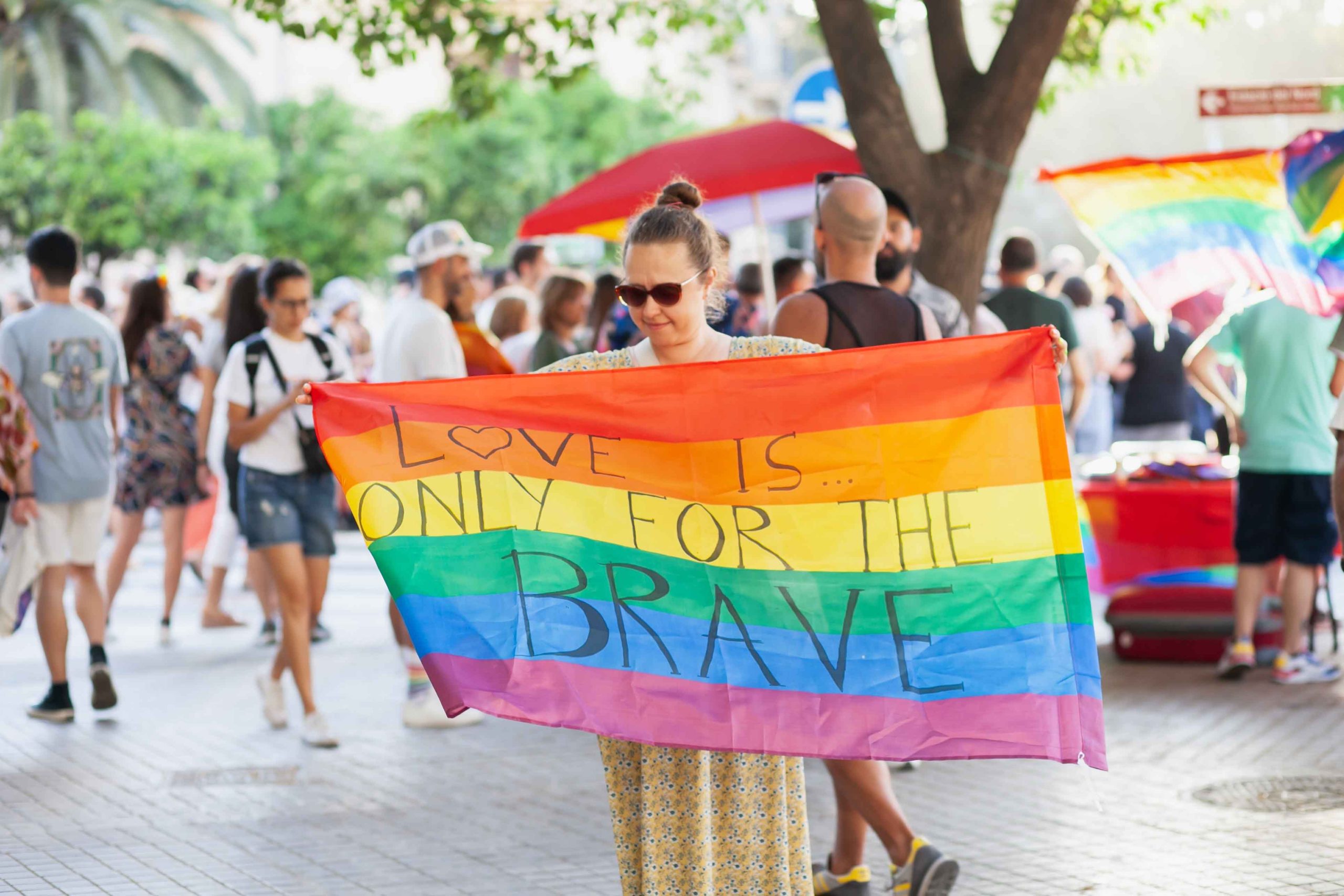
- Enables access to social environments without prejudice against them for belonging to this minority, resulting in lowered expossure to stressors compared to other contexts.
- Access to stronger social support when faced with prejudice.
- Allows individuals with a strong group identity to self-evaluate by comparing themselves with people from their own group instead of people from the dominant culture (Pettigrew, 1967).
- Can facilitate the reappraisal of a stressful situation, reducing its harmful effect on the individual's psychological well-being because the group tends to validate the experiences and feelings of their members. In fact, this reappraisal is the cornerstone of psychological therapies that seek to empower those who belong to discriminated groups.
About the author
Jorge Jiménez Castillo is a psychologist at SINEWS, where he practices in English and Spanish. He works daily with local and international populations and has a long history of studying the reality of the LGTBIQ+ community in and out of the clinic. He works from a cognitive-behavioral approach with evidence-based interventions and believes that in order to provide quality psychological care one must be aware of the inequalities that intersect with users and explore how they intersect with each other.
Division of Psychology, Psychotherapy and Coaching
Psychologist
Adults and adolescents
Languages: English and Spanish





